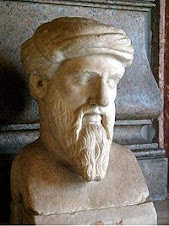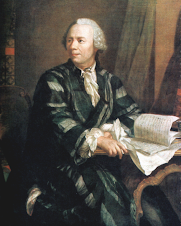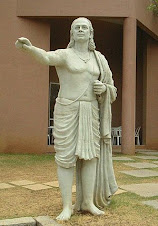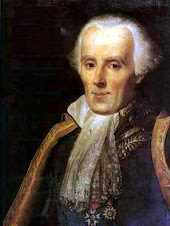A circle has 360 degrees, but it also has 400 gradients and approximately 6.2831853 radians. It all depends on what *units* you measure your angles with.
You think 360 is a terrible number, and you think that you want a circle to have 100 "somethings" in it. Well, you divide up the circle into 100 equal angles, all coming out from the center, and then you call one of these angles a "deeg." Then you've just defined a new way to measure a circle. 100 deegs are in a circle.
This invented unit, the deeg, is much like the degree, except the degree is smaller (why?). They are both angles. Just as 1 inch = 2.54 centimeters, although the centimeter is smaller, the inch and centimeter are both units of length. So the ancient Babylonians (not the Greeks), decided that a circle should contain 360 degrees. In one degree there are 60 minutes (though they have the same name, one minute-angle is not the same as one minute-time). Furthermore, in one minute there are 60 seconds (again, one second-angle is not one second-time, though they are the same word).
The British military chose a different way to divide the circle, specifically, 400 gradients in one circle. So one gradient is a tad bit smaller than a degree. And what's a radian? It's what mathematicians use because there's a way to divide the circle into a number of parts that happen to make certain computations easy. The way they decided this was that they took a circle, say with radius 1 cm. Then they took a piece of string, and made marks on it, evenly spaced 1 cm apart. Then they took the string and wrapped it around the circle. They then asked how many little 1 cm pieces of string fit around the circle, and they got the answer of about 6.2831853 pieces. They decided that the angle that a 1 cm piece of string covers as it is wrapped about the edge of a circle of radius 1 cm should be called one radian. Weird but true.
Now, one might wonder why the Babylonians chose the number 360. The reason is that their number system was based on the number 60. To compare, we base our number system on 10. For us, 10 is a nice, round number and we find it very convenient to count in multiples of 10, like millimeter, centimeter, meter, kilometer, etc. But the Babylonians liked 60.
Why this was nice for them, nobody knows, but 60 is a nice number too, because 60 = 2 x 2 x 3 x 5 and 360 = 2 x 2 x 2 x 3 x 3 x 5. What's so neat about that, you ask? Well, you will find that 360 is divisible by 2, 3, 4, 5, 6, 8, 9, 10, 12, 15, 18, and 20. There are few other numbers as small as 360 that have so many different factors. This makes the degree a very nice unit to divide the circle into an equal number of parts. 120 degrees is 1/3 of a circle, 90 degrees is 1/4, and so on.
Tuesday, October 20, 2009
WHY IS A CIRCLE DEFINED AS 360 DEGREES?
Subscribe to:
Post Comments (Atom)














VERY VERY INTERESTING.Thank you much, madam.
ReplyDeletePlease continue your service.
With Warm Wishes from
NEELAKANTAN C.S. PALAKKAD, KERALA